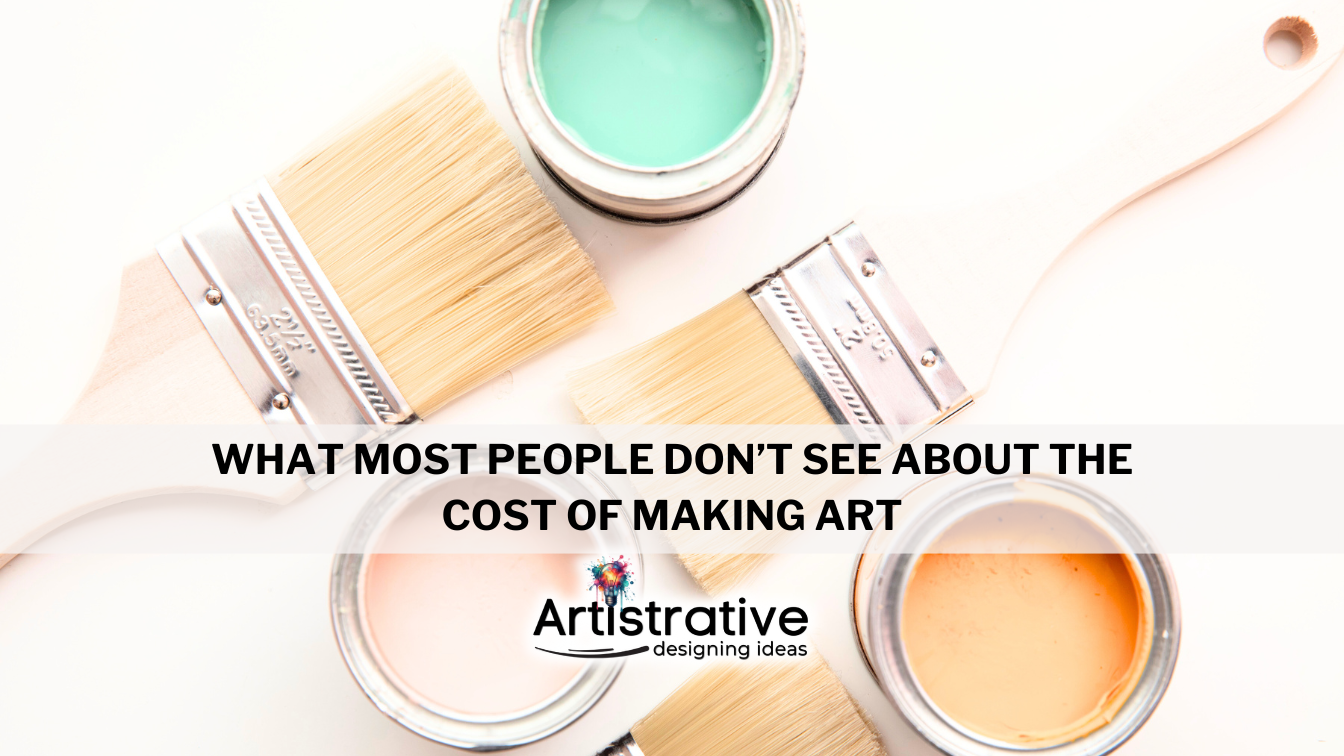This week, I stopped into a local art supply store to pick up a few paints I needed—just 8 small bottles (45ml each, or about 1.5 fl oz) and 3 tubes. That small haul came to over $100.
To a fellow artist or maker, this probably doesn’t sound surprising. But to many people outside the creative world, that number seems pretty high for such a small bundle of supplies. That’s exactly why I’m sharing this—not to complain (The local store actually has fair pricing, and I’m happy to support them), but to start a conversation about something a lot of people never get to see: the real cost of creating professional, original art.
Not All Supplies Are Created Equal
Unless you work in the creative field yourself, you likely don’t encounter professional-grade materials in your everyday life. What you do see, more often than not, are the paints and tools available at the dollar store or in big box craft aisles. Those products tend to be the most visible, so they become the reference point for what people assume art supplies cost.
But there’s a big difference between those hobby-grade materials and the kinds of supplies many working artists use. Budget-friendly paints are perfectly fine for kids, casual crafting, and experimentation. They serve a purpose and allow people to explore creativity affordably—and there’s real value in that. However, they’re not made with the same level of care, durability, or performance in mind.
Professional-grade supplies are a different story. The pigments are more concentrated and vibrant. The binders and additives are chosen to be archival, meaning they’re designed to stand the test of time without fading, yellowing, or breaking down. These are the materials we rely on when we want a finished piece to hold its colour, texture, and integrity for years—or even generations.
Why Professional Work Costs More
This post isn’t about defending pricing—it’s about sharing some context. When artists invest in high-quality materials to create work that’s built to last, their prices will naturally be higher than someone working with student or hobby-grade supplies. There’s absolutely nothing wrong with hobby work or lower-priced art—every piece of handmade work has value, and every creative journey matters. But it’s important for buyers to understand why there’s often a price difference.
In many cases, people base their expectations of handmade pricing on what they’ve seen hobbyists charge at craft fairs or on social media. And that’s understandable—those prices are often much lower, and hobbyists usually aren’t trying to make a living from their work. They’re creating for fun, and often use more affordable materials because that makes sense for their goals.
Professional artists, on the other hand, are building long-term practices. As our skills develop, our standards rise. We start reaching for better tools—not just because they give better results, but because we want the work we create to reflect the time and care we’ve put into our craft. And better tools, unsurprisingly, come at a higher cost.
There’s nothing elitist or exclusive about that—it’s just the natural evolution of investing in your practice.
The Hidden Costs Behind the Work
When someone sees the price of a handmade piece and thinks it’s too high, what they may not realize is that sometimes, the price they think it should cost wouldn’t even cover the materials—never mind the time, training, experience, and tools involved in bringing that piece to life.
That doesn’t mean everyone has to be able to afford professional art—just that it’s worth understanding where those prices come from. It’s not arbitrary. It’s not inflated “just because it’s handmade.” It’s a reflection of what it actually takes to make something from start to finish, using materials and skills that have been carefully developed over time.
Every Artist’s Journey Is Unique
This isn’t about drawing a line between hobbyists and professionals as if one is better than the other. I truly believe all creative work has value, and we each approach our practice differently based on our goals, resources, and experience. What matters is transparency and understanding—especially when it comes to pricing.
So this little snapshot of paint isn’t just about paint. It’s a glimpse behind the scenes of what goes into original, lasting work. It’s one example of the hidden investments many artists make to ensure their work isn’t just beautiful now, but stays that way in the future.
When you choose to support a professional artist or maker, you’re not just buying a finished piece. You’re helping cover the real costs of doing the work—and making it possible for that work to continue.
FOLLOW ME on social media for more tips and information: FACEBOOK | INSTAGRAM
